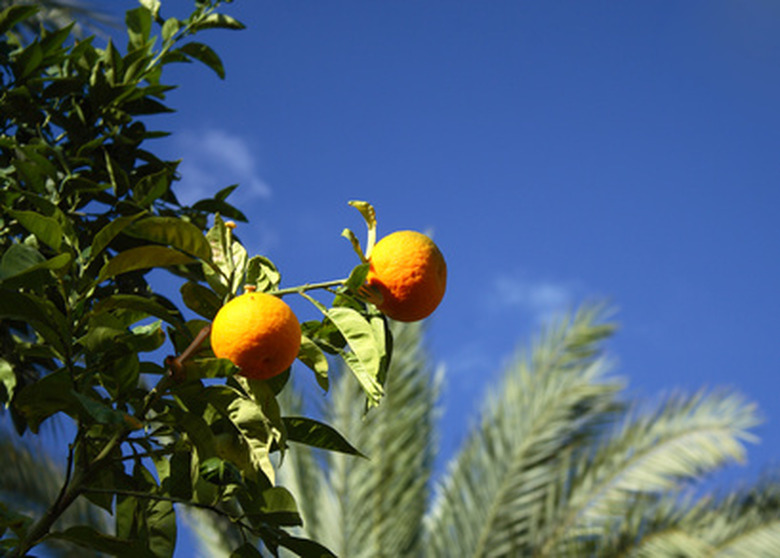Citrus Tree Disease & Rust
The citrus rust mite (Phyllocoptruta oleivora), called the white mite on lemon trees, causes widespread damage to the foliage, twigs and fruit of the citrus tree. This can weaken the tree's overall health and makes it susceptible to disease. The insect can occur on citrus trees at any time of year, but usually occurs predominately in June and July, according to the University of Florida.
Identification
An adult rust mite cannot be seen without some form of magnification. It measures only 0.15 mm long. The insects body appears yellow or tan and is three times as long as it is wide. The body is wedge shaped. The pink citrus rust mite sports a pink wedge-shaped body and tends to only live on the leaf margins of the tree (unlike the rust mite, which occurs all over the foliage, twigs and fruit of the tree).
- The citrus rust mite (Phyllocoptruta oleivora), called the white mite on lemon trees, causes widespread damage to the foliage, twigs and fruit of the citrus tree.
- The pink citrus rust mite sports a pink wedge-shaped body and tends to only live on the leaf margins of the tree (unlike the rust mite, which occurs all over the foliage, twigs and fruit of the tree).
Occurence
The citrus rust mite prefers to live in shady locations on the tree. It does not tolerate direct sunlight well. The heaviest infestation of the insect tends to occur in the middle of the tree's canopy. The insects also congregate on the shady side of the fruit. They thrive in warm, humid weather. Rust mites enjoy consuming young, new foliage of the tree first. Rust mites occur heaviest on grapefruit, but can also damage oranges and lemons.
- The citrus rust mite prefers to live in shady locations on the tree.
Life Cycle
The eggs of the rust mite can be laid all over the foliage in a scattering pattern, or they can occur in the depression dimples of the citrus fruit. Each egg is tiny, flat and opaque in color. A female will lay 20 to 30 eggs over the course of 20 days, according to the University of Florida. Generation after generation will occur at one- to two-week intervals until the cold weather arrives.
Effects
In the late spring to early summer it's good to begin evaluating the fruit and foliage of the citrus tree using a 10X to 15X hand lens to check for mites. The rust mites attach themselves to the foliage, twigs and fruit of the tree using their sharp, piercing mouth. Once attached, they leisurely suck the water and nutrients from the tree. The mites feed heavily on the fruit and cause bronze spots.
- The eggs of the rust mite can be laid all over the foliage in a scattering pattern, or they can occur in the depression dimples of the citrus fruit.
- In the late spring to early summer it's good to begin evaluating the fruit and foliage of the citrus tree using a 10X to 15X hand lens to check for mites.
Control
Rust mites are rarely controlled on citrus trees that produce juice fruit, because the outward appearance of the fruit rarely matters. Fruit used as a fresh market produce will require three or four applications of miticide per year to control the citrus rust mite. Applications of petroleum oil is often used to control both citrus rust mites and the fungus, greasy spot. Private gardeners can apply wettable sulfur to an infested landscape citrus tree, according to the University of California.
